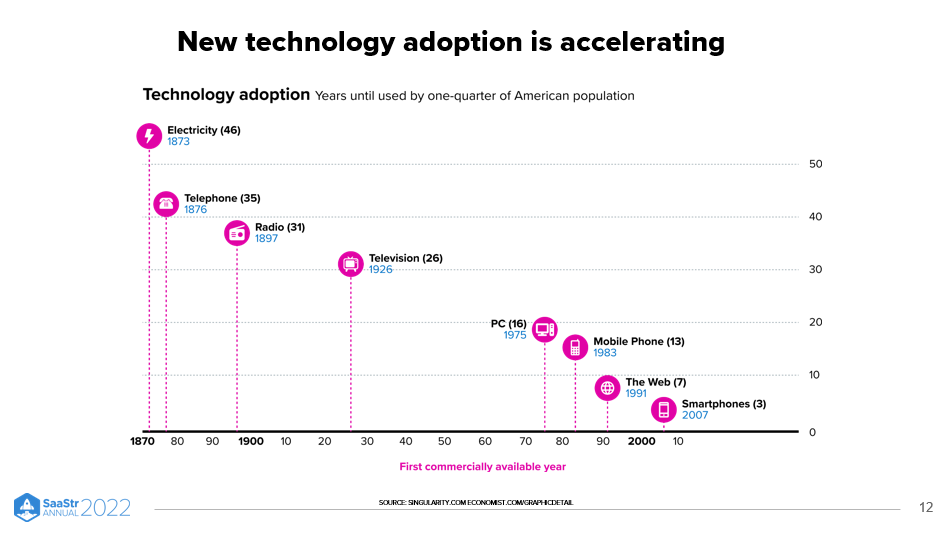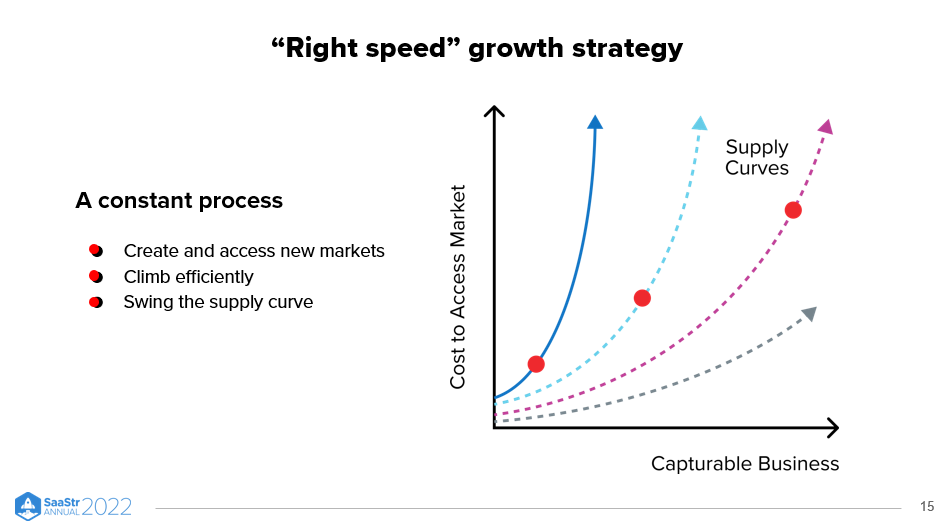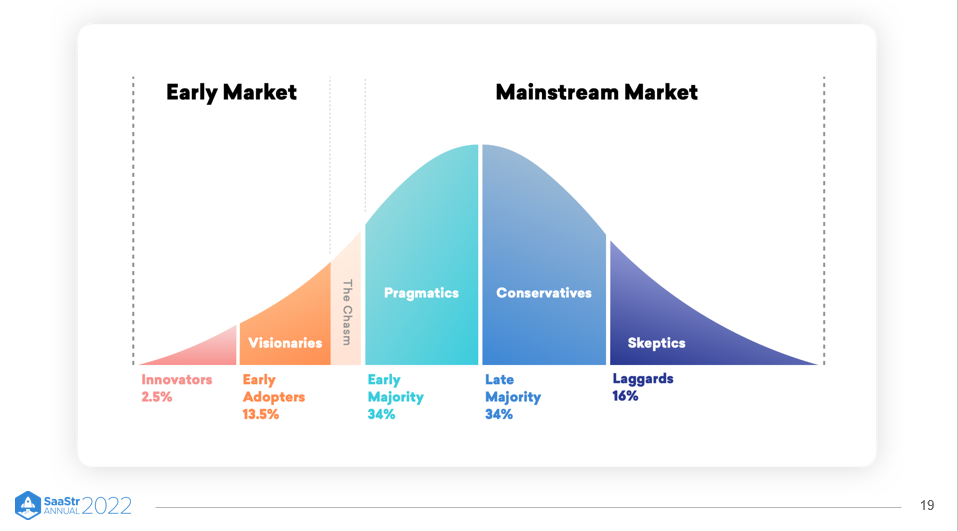How do you create a concept that not only doesn’t yet exist but hasn’t yet been imagined? Bill Magnuson, Co-founder and CEO of Braze, remembers his company’s founding in 2011 in an office with bare concrete floors—an austerity that he opines as “probably an ingredient for category creation.” Over his decade of experience, he has a few thoughts on how you can both envision and create your company’s path.
Change creates opportunity

The accelerating pace of new technology has defined the modern era. For example, it took forty-six years from the advent of electricity for one-fourth of the population to use it. This was followed by television (twenty-six years), the PC (sixteen years), the web (seven years), and smartphones (a mere three years).
Braze recognized that the future would bring about a world in which consumers develop unprecedented intimacy with their phones. From its earliest days, Braze embraced a duel set of convictions:
- New businesses would be mobile first.
- The mobile revolution would transform legacy businesses.
From these convictions, Braze understood that the way companies communicate with customers before the mobile era lacked the sophistication to thrive. Braze knew there would be an opportunity for new categories, skill sets, and interdisciplinary collaborations.
Understand and build for teams undergoing change
Braze has built a business by selling to job titles that did not even exist when it first began. Marketing was not always a data-rich environment, but now, a modern growth team can tie marketing together with product engineering and data analytics.
“If you have permission to interrupt someone’s life, there needs to be a reciprocal relationship. You must deliver value in the moment.”
Technological change needs to mesh with human change to capture new opportunities. Along with the technological change that enabled the formation of a new category called customer engagement, new ways of working and skill sets were introduced to the landscape.
Stick to your convictions
From 2015 to 2017, Braze grew eightfold. Impressive, right? This remarkable growth took four years to come true after Braze’s start in 2011. The acceleration in revenue couldn’t begin until the markets for it existed. It wasn’t until Apple’s App Store hit three million apps that Braze hit 2M in ARR.
“When creating a new category, you can see the opportunity ahead of you. But its realization will not always be clear in the beginning.”
Even after their first five years, when Braze pursued Series-C fundraising in 2016, every single round only netted one term sheet. But rather than succumb to discouragement, Braze held firm to their conviction on the exponential growth of mobile users.
Grow with process, not just speed

When building a new category, the eventual market can be massive—but that early access to it can be very expensive. Companies will try to grow before the market is truly ready, clawing their way up an inelastic curve. So, what is the “right” speed of growth?
Optimized growth doesn’t take the form of a speed but of a process. Working in this environment demands patience. Navigate market dynamics over time—from employee base to customer investment—instead of making hasty decisions. Growing sustainably over time requires a balance between how much you pay to grow today and where you invest for the future.
Braze has witnessed other companies lose focus in trying to claw up the growth curve. Without focusing on product market fit, a company might find itself selling five products with only a hundred employees to meet its targets.
Though, if you stay focused, your focus will have kept you years ahead of your competition when the market does arrive—with a vastly superior product and an understanding of the market that got you there.
Discover where value lies in the chain
Braze did everything it could to ingest data and be a good listener. More than anything, they worked to integrate data flow vertically, take their customer data, and get it to stack as quickly as possible.
“As this category emerges, where do you think the value will collect? How will technology change around it?”
Be strategic about what you integrate and where you modularize. As Braze evolved, they invested especially heavily in classification, orchestration, and personalization—where they knew they wouldn’t partner or modularize. They stayed modular at the top and bottom of the stack (data ingestion and action) but focused on product development in the middle.
Don’t lose sight of tomorrow’s customers

The area under the curve matters. Don’t lose sight of tomorrow’s customers.
The early market will always be challenging. The innovators who find your product early and are willing to overlook its issues can’t, or won’t, pay. Work through these growing pains and draw in the early adopters because the users just beyond them make up the bulk of your initial target market (who will pay!).
Ask yourself:
- How will products, technology, customers, skill sets, and teams change?
- What will tomorrow’s customers ask for?
- How can you prepare yourself for what’s coming?
If you keep these questions in mind, you can hit your stride in the middle of the curve. Build for today, but keep your eye on the future.
The post Introducing SaaStr Workshop Wednesdays! New Content, Every Week, Always Live, Never Recorded appeared first on SaaStr.
via https://www.aiupnow.com
Amelia Ibarra, Khareem Sudlow
